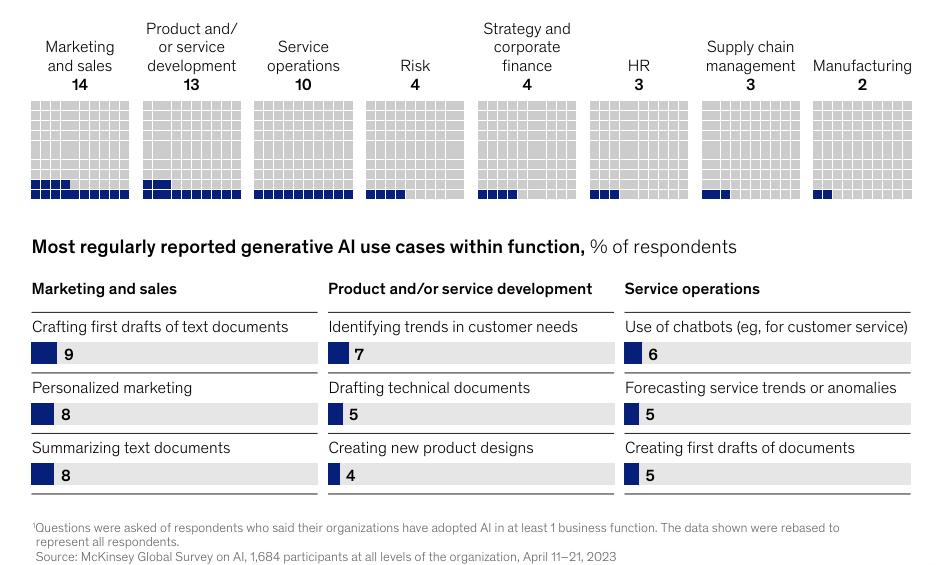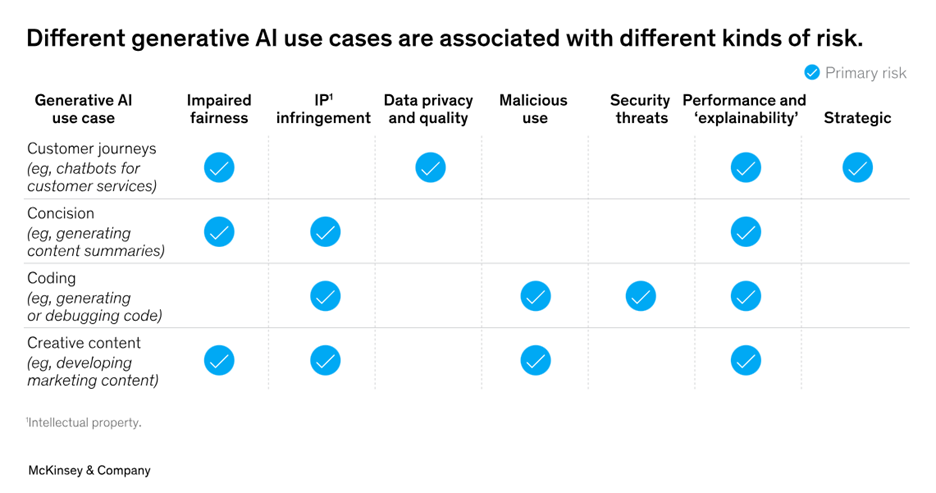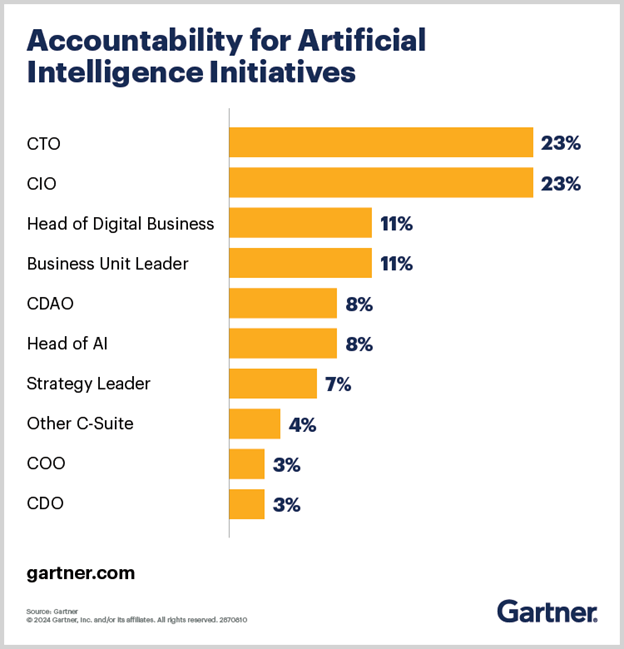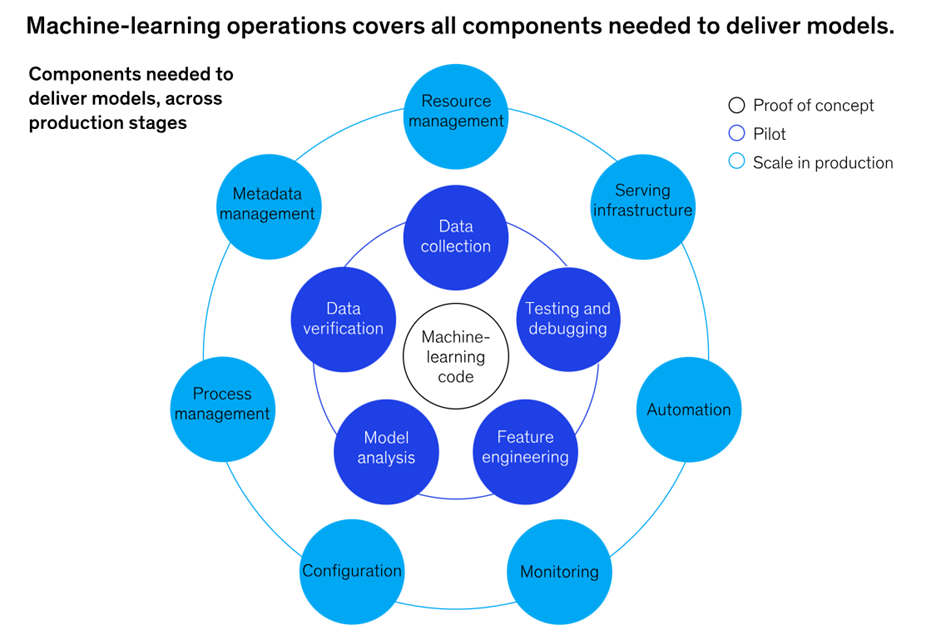As we all know, Gen AI took the world by storm in 2023 with ChatGPT and other applications that can mimic human intelligence in novel creations. Though AI has been part of the operational culture for years in applications such as fraud detection, customer service bots, and risk management, the evolution of large language models opened the door for generative AI to penetrate various industries. Enterprises’ C-suites are keen on exploring and incorporating Gen AI into their business ecosystem to increase productivity, customer experience, and process automation.
While the Gen AI talks prevail across podiums, enterprises are either struck with finding the appropriate use case to incorporate Gen AI effectively or need help accessing their own data, choosing foundation models, and deploying models into their data ecosystem. At Zuci Systems, we have been working on AI projects to solve enterprises’ business challenges. Guess what? To my surprise, Zuci’s recommended AI solution for enterprises is not generative AI. This led me to bring in Zuci’s AI expert to shed some light on generative AI and AI adoption.
Hi, I’m Naresh Kumar , Lead Marketing Strategist at Zuci Systems.

Introducing Janarthanan Poornavel , Chief Technology Officer at Zuci Systems, sharing his views on choosing the right AI technology, effective AI adoption strategies and ways to measure AI project success.
Naresh: What’s the pressing need for enterprises to choose activation AI over Gen AI? Could you share a real-time use case of activation AI?
Jana: When employing AI in businesses, it’s essential to understand that not all AI approaches are equal. Gen AI offers a canvas for innovative constructs, providing a fresh perspective and sparking creativity. However, when it comes to addressing the intricate challenges enterprises face, particularly in areas like process automation and customer interaction, the demand for consistent and reliable results takes precedence.
That’s where activation AI comes in. It’s all about consistency. Activation AI is built upon Gen AI that delivers the same results every time, which is crucial for businesses. Whether it is activating data from forms, tables, paragraphs, or even audio and video, activation AI ensures accuracy and efficiency with minimal errors.
While GenAI has its place in fostering creativity, its role in solving real business problems is limited. Activation AI is the go-to solution for enterprises where reliability is critical. It provides the consistency and precision needed to drive success.
My preference for activation AI aligns with the broader industry trend. It is the practical choice for businesses looking to leverage AI effectively and drive tangible results. By prioritizing consistency and reliability, enterprises can use activation AI to make a real impact on their businesses.

In response to the AWS report*, Gen AI may be great for solving individual problems like content generation and video editing. But for enterprises that are looking to solve complex problems, activation AI is the key, and early breakthroughs will occur through process automation and customer experience.
Here is my stance on activation AI’s crucial role in process automation and customer experience.
1. Process Optimization
Imagine a scenario where a company deals with thousands or even millions of documents every day. Manually processing these documents is tedious and time-consuming, prone to errors and inefficiencies. However, with Activation AI, document processing is simplified. For instance, Intics.ai, a pioneer product in the activation AI space, has been solving crucial enterprise AI problems for over three years, even before the gen AI boom sparked on the internet.
Businesses can now automate the extraction and summarization of data from documents with unparalleled accuracy and efficiency. Tasks that once required hours of manual labor can now be completed in a fraction of the time, freeing up valuable resources and driving operational excellence.
For instance, we worked for a firm that received nearly 700,000 invoices a year. Here, employees manually reviewed each invoice, which was time-consuming and error-prone. With our activation AI approach, we could project a reduction in the error rate by up to 15% and manual time by 85,000 hours.

2. Customer Experiences
Customer self-service processes can become seamless and efficient through the deployment of chatbots and virtual assistants powered by activation AI. These virtual entities automate accurate responses, reducing operational costs whilst ensuring swift responses to customer queries. Decision makers can derive valuable insights to refine customer experiences, monitor performance, and drive business growth through personalized interactions.
“Data is not just for reporting; it can also act as a command. Consider a kiosk at post offices with an activation AI (large audio model) infrastructure. When a user wants to return goods or ask a specific query to a customer service representative, they can reach out to the kiosk and ask the query through a voice command. The large voice model then processes the query, providing users with exact context and helping users resolve their queries. These models not only improve customer experiences but also reduce manual human work from performing mundane tasks.”
Naresh: How can enterprises ensure successful integration and adoption of activation AI technology within their ecosystem, and what are the challenges of adopting activation AI?
Jana: Any successful AI implementation requires the ability to access high-quality data from disparate sources. One of the key factors in successful AI integration is transitioning to an innovative culture. Both C-suite decision-makers and technical teams must align their priorities and work together towards one common goal. C-suites should play a crucial role in setting the tone from the top down and ensuring that investments are made in the necessary AI technologies. Moreover, organizations must commit to building responsible AI systems, prioritizing fairness, transparency, and privacy from the outset. This includes identifying and mitigating biases, improving explainability, and safeguarding sensitive data.
However, challenges inevitably arise in the adoption of AI technologies. One of the most significant hurdles is the fear of failure. AI is an iterative process, and experimentation is key to success. Organizations must be willing to learn from mistakes and adapt their strategies accordingly rather than allowing setbacks to deter progress. Providing comprehensive training programs and clear guidelines for AI usage can help mitigate risks and ensure that employees feel empowered to leverage AI technologies effectively.
“Having been working for one of the healthcare clients in building and deploying models for activation AI, our goal was initially to educate the client on what’s possible and what’s not. There is no one-size-fits-all approach to initiating an AI project and completing it like a software development project. At every stage of the progress, we involved C-suite to enable them to understand the customized workflow we built to activate the data from insurance documents.”

Naresh: How should enterprises measure the success of an AI project?
Jana: Measuring the success of an AI project requires a shift in mindset from short-term gains to long-term strategic impact. While traditional ROI metrics provide a narrow view of success, organizations must adopt a more holistic approach that considers broader business outcomes and the competitive landscape.
If organizations solely focus on immediate returns, they risk missing critical opportunities for innovation and growth down the line. Instead, the C-suite should measure AI efforts based on what success means for their business in terms of agility, competitive advantage, and risk tolerance.

Organizations must ask themselves, If we don’t invest in this now, will we fall behind our competitors in the future when the technology matures? By shifting the focus from short-term ROI to long-term strategic value, organizations can better position themselves for success in the ever-changing business landscape.
While traditional ROI metrics may not fully capture the value of AI initiatives, organizations can still measure success through factors such as time saved through automation, new opportunities identified, improvements in customer service, and increase in up-sells. Ultimately, measuring the success of AI projects requires a forward-looking approach. By embracing agility and innovation, organizations can leverage AI to drive sustainable growth, competitive advantage, and business success in the years to come.
Moving to Vasudevan Swaminathan

Vasudevan Swaminathan , our Founder CEO, shares his experience on the pathway to successful AI projects.
Naresh: For organizations looking to take a leap on AI, what could be the appropriate pathway to kickstart their AI journey?
Vasu: That’s an excellent question. I have been discussing AI a lot with Jana, and from nowhere to activation AI, we have built a frontier in the AI space to educate and consult enterprises looking to deep-dive into AI.
Regarding your question, AI is all about giving computers the ability to analyze data, recognize patterns, and make decisions independently. And the exciting part? AI has the potential to revolutionize the way enterprises work.
Having established the AI team and worked on AI projects across banking and healthcare for over three years, I can firmly call out our proven and successful 7-layer approach for AI projects. Organizations should consider these layers that guide them through the different stages of their AI journey, from laying the groundwork to deploying and maintaining AI-powered solutions.
Layer 1: Data Delve: Gaining access to your own data (that represents your tacit knowledge) establishes the groundwork for your AI journey. By doing so, you ensure the availability of high-quality data for training, fine-tuning, or RAG (Retrieval Augmented Generation). Be it generative AI or ML, having access to data unique to your business (your tacit data) will set you apart).
Layer 2: Label Logic: Be it data activation or predictive analytics, labeling or annotating your tabular data or images is pivotal. Be it data activation or predictive analytics, labelling your tabular data or images is pivotal. With effective labeling practices, your models will be great at their task of predictions or classifications.
Layer 3: Feature Forge: This step extends the previous step and requires deliberate practice to push in the right representation of the data. For predictive analytics on top of tabular data, this step practically determines the success of the entire initiative.
Layer 4: Model Mastery: Be it ML or gen AI, modeling is the stage where the best of algorithms is married with the best of your data. This step is mainly left to the machines but requires human intelligence to maximize the value by selecting appropriate algorithms, tuning hyper parameters, and evaluating model performance for the desired accuracy.

Layer 5: Validation Voyage: Here, models are validated on unseen data to assess performance and generalization ability. Be it LLMs (Large Language Models) or LVMs (Large Visual Models), this is where your organization’s human talent needs to step in. As models need to be validated on unseen data to assess performance and generalization ability, this step requires the most human intervention.
Layer 6: Deployment Drive: Trained models are deployed for predictions or task automation in real-world environments. This involves integrating models into existing systems, monitoring performance, and addressing deployment issues.
Layer 7: Maintenance Mode: Continuous monitoring, updating, and improving deployed models to maintain performance and adapt to changing conditions. This phase includes monitoring model drift, retraining with new data, and incorporating user feedback for ongoing effectiveness and relevance.
Whether enterprises want to incorporate traditional or activation AI into their business ecosystem, decision-makers must understand the foundation systems to ensure they identify the right AI technology to solve the business problems they are trying to address. On that note, activation AI can be a Jarvis for enterprises experimenting with and investing in AI models to future-proof their businesses.
Originally featured in our LinkedIn Newsletter, ZtoA Pulse.
Want to connect with our experts? Leave your details and we will get back to you.
